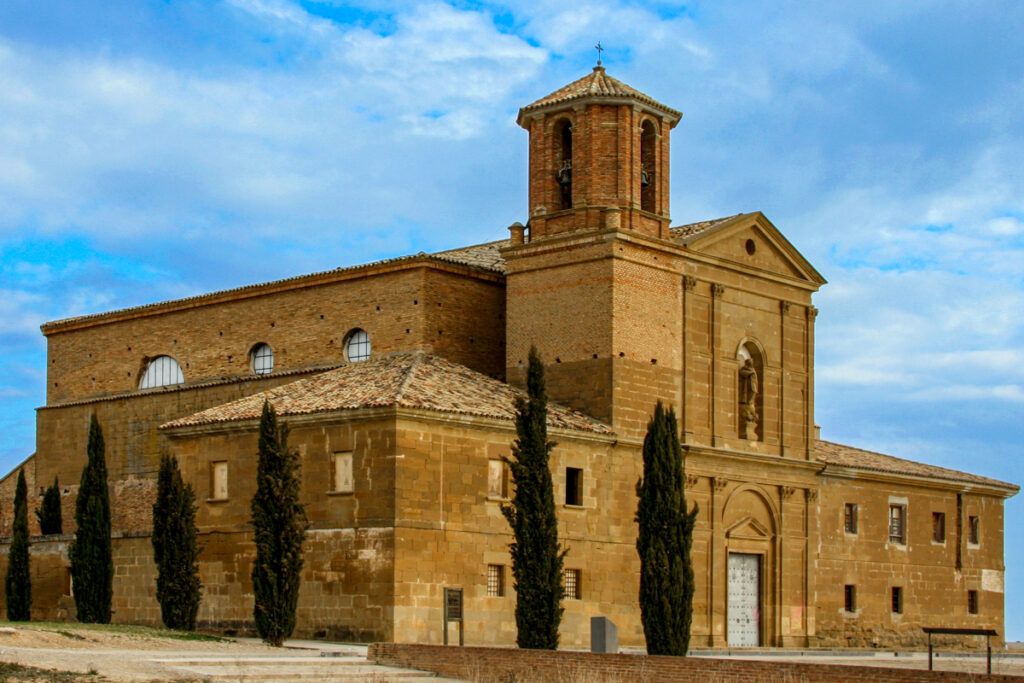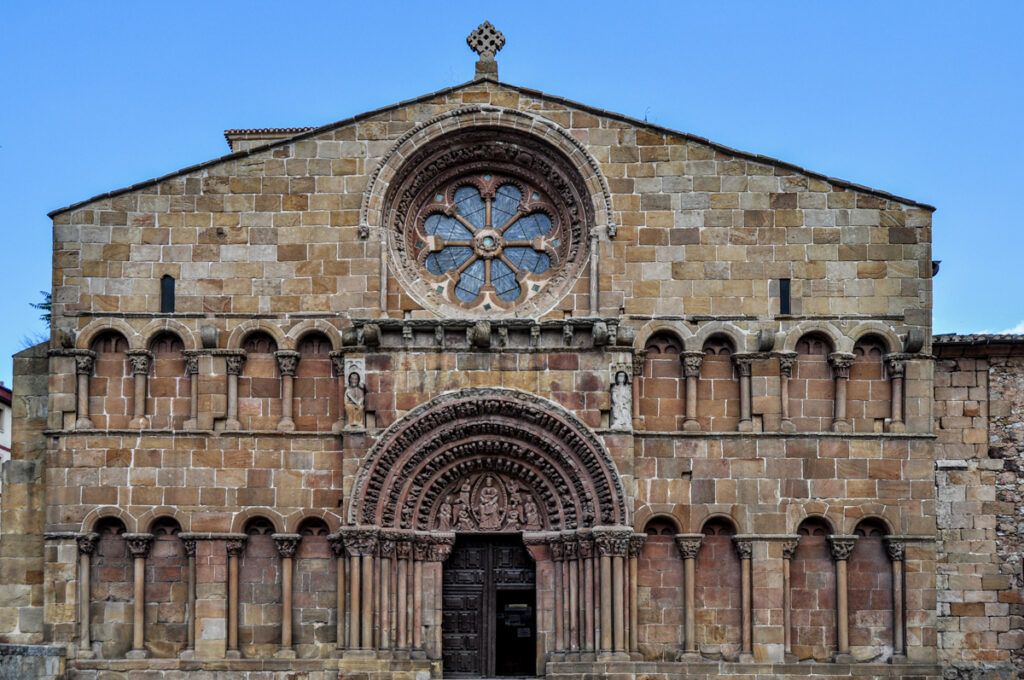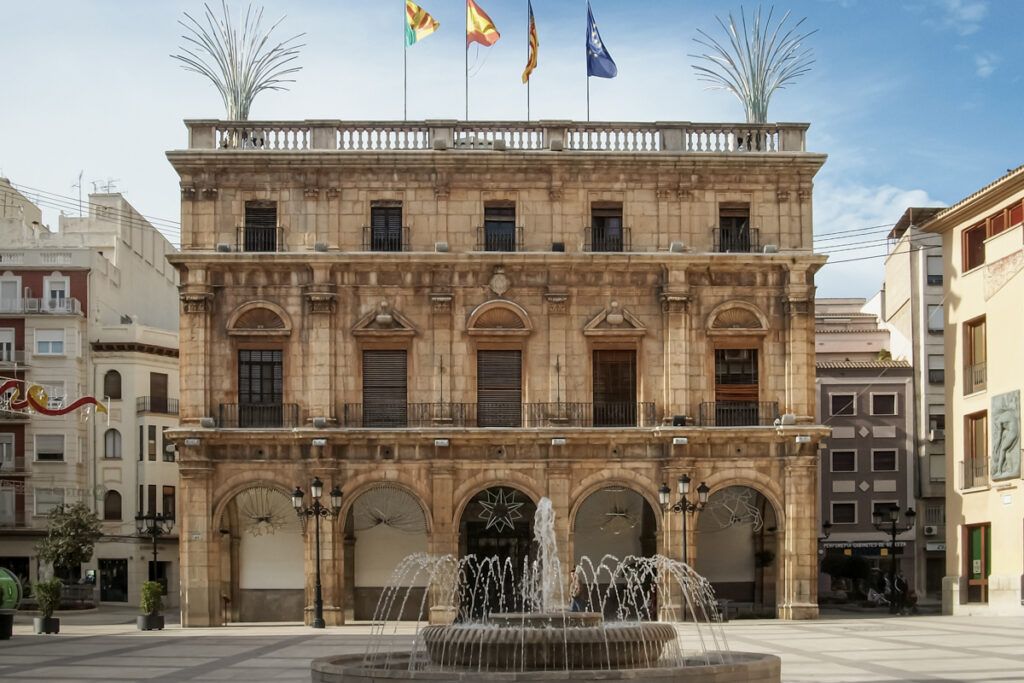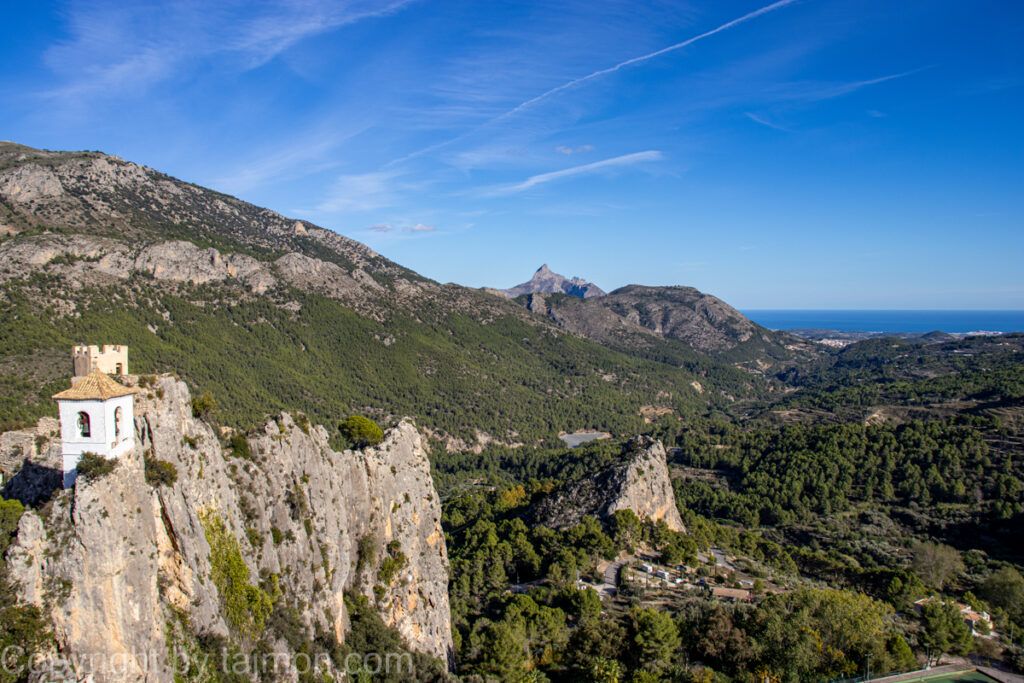Iglesia del Temple
Iglesia del Temple, also known as the Temple Church, is one of the most important churches in Valencia. It is located on the Temple Square (Plaza del Temple), in the heart of the city.
This church is part of a larger complex that includes a monastery, school, and church of the Order of Montesa. This complex is popularly known as the “Temple” because it previously belonged to the Order of the Templars.
The current palace was built between 1761 and 1770 by order of Charles III, in a neoclassical style, after an earthquake destroyed the previous monastery. Directly related to the court, its style is very Italian neoclassicism, in which the architect Miguel Fernández (1726-1786) followed the teachings of his master Francesco Sabatini.
The facade of the monastery is very austere, with triangular pediments above the windows of the main floor but without columns or pilasters, and the same sense of solidity is offered by the inner courtyard, with stone arcades on the lower part and balconies on the two upper floors.
The church, located on the west side of the building, has three naves, side chapels, and a dome over the crossing. The facade is led by two towers that flank a large triangular pediment and shelter gigantic pilasters between which are the doors and two balconies. Only the roofs of the towers and the dome with stained glass tiles are traditionally Valencian.
Iglesia del Temple, also known as the Temple Church, is one of the most important churches in Valencia. It is located on the Temple Square (Plaza del Temple), in the heart of the city. This church is part of a larger complex that includes a monastery, school, and church of the Order of Montesa. The current palace was built between 1761 and 1770 by order of Charles III, in a neoclassical style, after an earthquake destroyed the previous monastery.
Directly related to the court, its style is very Italian neoclassicism, in which the architect Miguel Fernández (1726-1786) followed the teachings of his master Francesco Sabatini. The facade of the monastery is very austere, with triangular pediments above the windows of the main floor but without columns or pilasters, and the same sense of solidity is offered by the inner courtyard, with stone arcades on the lower part and balconies on the two upper floors.
The church, located on the west side of the building, has three naves, side chapels, and a dome over the crossing. The facade is led by two towers that flank a large triangular pediment and shelter gigantic pilasters between which are the doors and two balconies. Only the roofs of the towers and the dome with stained glass tiles are traditionally Valencian.
The interior also observes an impressive classical order on the walls, and it is worth noting the temple of the main altar in the form of a tabernacle and the paintings with fake perspectives made in 1770 by Filippo Fontana. Today, the monastery is the seat of the government delegation.
Address: Plaza del Temple, 2, 46003 Valencia, Spain.
Iglesia de San Juan de la Cruz
Iglesia de San Juan de la Cruz, also known as the Church of St. John of the Cross, is one of the most important churches in Valencia. It is located on Calle Poeta Querol, in the heart of the city. This church was one of the first to be founded after the conquest of Valencia by James I of Aragon, on the site of a former mosque.
However, its current configuration dates back to 1602-1615, and the first stone was laid by Patriarch and Archbishop of Valencia, Juan de Ribera. It is a church with one nave with chapels between buttresses and a polygonal apse. On its facade, decorative elements are concentrated especially on the doors, while the rest is a smooth wall of brick on a stone plinth, crowned with a balustrade with balls.
On both sides, there were two small chapels, one of which is still visible today. The portal is already from the end of the 17th century and stands out for the use of Solomon columns and side consoles, on which two female figures seem to slide. The upper edicule was originally led by a statue of St. Andrew, from which only traces of his cross with its characteristic X shape remain today.
The most noteworthy, however, is the Rococo decoration of the interior, the work of Hipólito Rovira and his disciple Luis Domingo from the second half of the 18th century. Made of stucco, but developed with exceptional quality, overloaded forms full of angels, fabrics, and vegetation seem to climb the walls.
Address: Calle Poeta Querol, 6, 46002 Valencia, Spain.






